Faster, more confident decision-making when seconds matter.
01 product built to give users a single source of truth for mission planning, fleet management, site configuration, and simulation making scalable autonomous drone delivery a reality.
Role
Lead Product Designer
Users needed one platform, not 5 different windows
Interviews revealed that existing processes along with fragmented tools slowed users, created safety risks and made scaling impossible.
Users struggled with fragmented, multi-window tools that slowed them down and raised safety concerns.
A consolidated system that gave users a complete view of their missions.
Build a platform that could safely support 500+ deliveries per day.
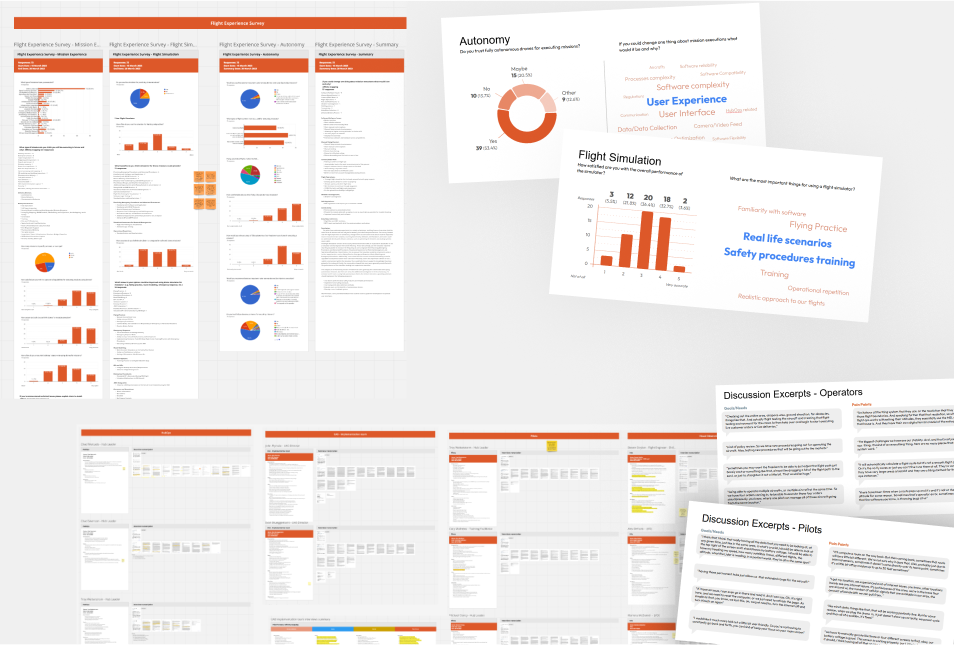
User interviews and surveys uncovered safety concerns and operational bottlenecks.
From workshops to wireframes: mapping the full system
Collaborated with users, engineers, and product leaders to design solutions across every layer. From mission planning and vehicle management to simulation and site setup.
Facilitated sessions with users, engineers, and product managers to map workflows and define priorities across missions, vehicles, and sites.
Created system maps and task flows that clarified how modules (mission planner, fleet manager, simulator, etc.) connected into one ecosystem.
Produced low-fidelity wireframes and prototypes to explore layouts, validate navigation, and test multi-mission workflows early.
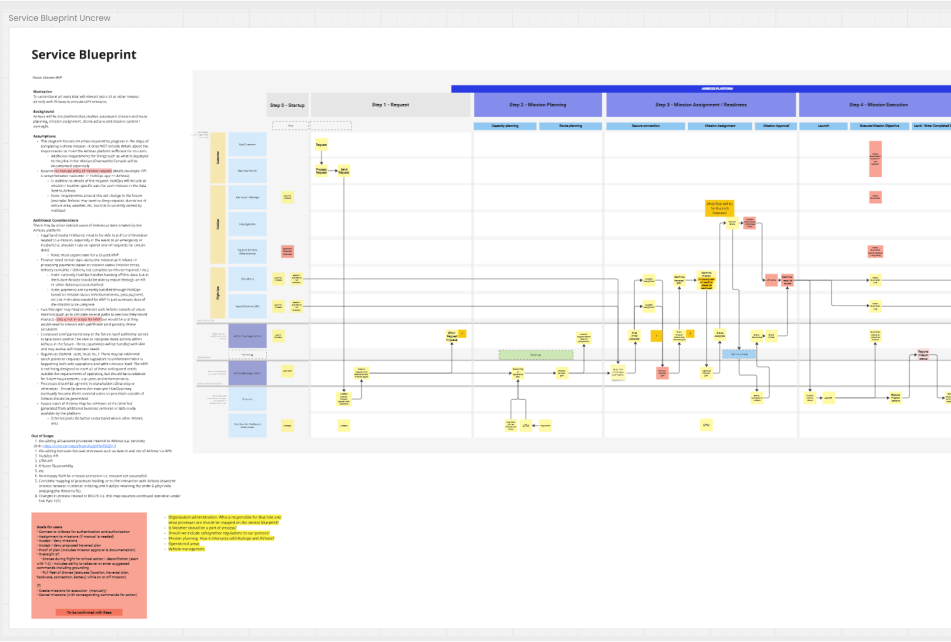
Mapping the full workflow in a service blueprint revealed gaps, dependencies, and opportunities for streamlining operations and understanding user flows.
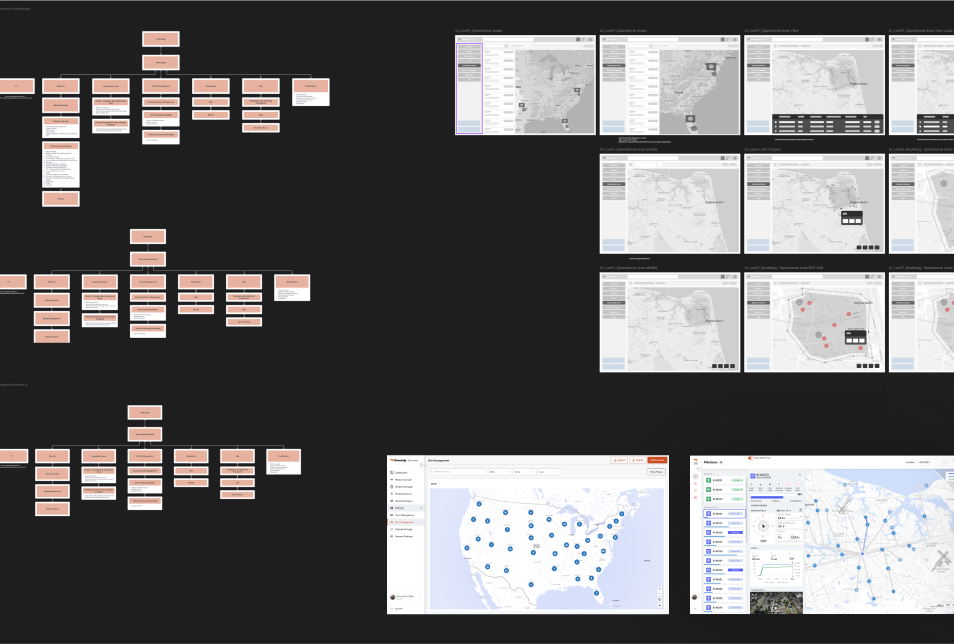
Structured the suite with early IA and wireframes, defining how missions, vehicles, and sites connected into a unified platform.
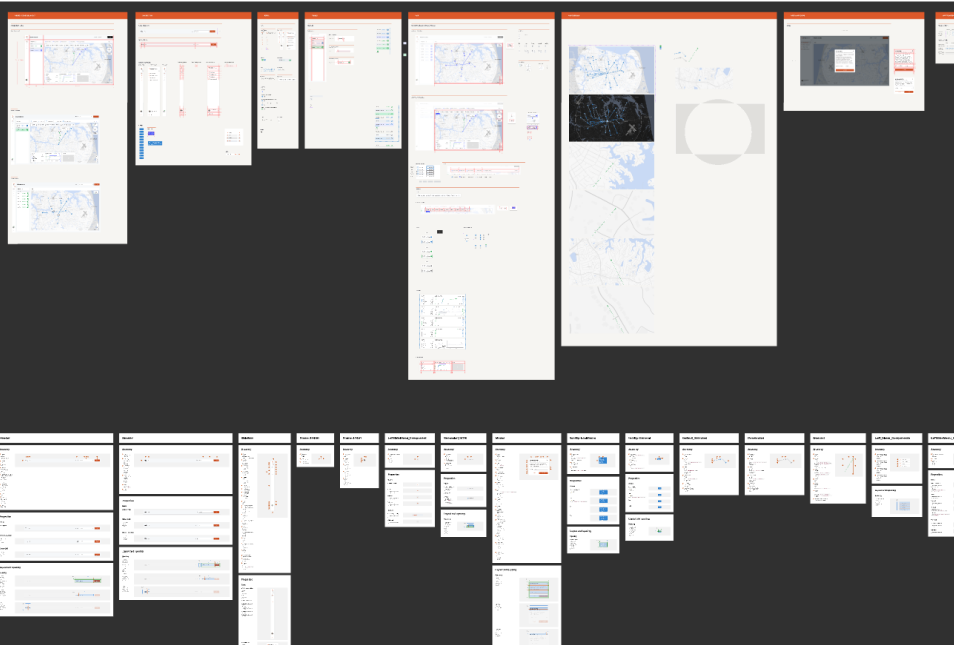
Explored multiple design directions across dashboards, maps, and mission views to consolidate fragmented tools into a single user experience.
Testing the workflows that mattered most
Validated planning, flows, automation, and fleet management for real-world scenarios, reducing setup time and boosting user confidence.
Focused on planning, multi-mission monitoring, and fleet management to ensure users could act quickly and confidently.
Users confirmed that consolidated views reduced friction compared to the old multi-window setup.
Early tests showed mission setup and validation times dropped from 5-6 minutes to as little as 3 minutes, improving safety and user efficiency.
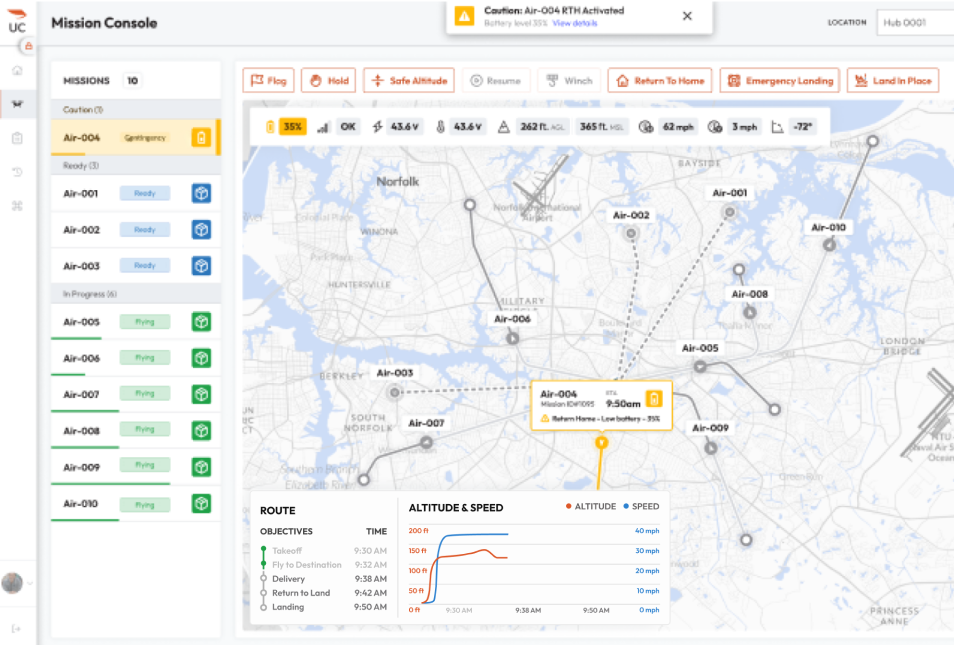
Mission Console: testing how users monitored multiple active flights and mission states
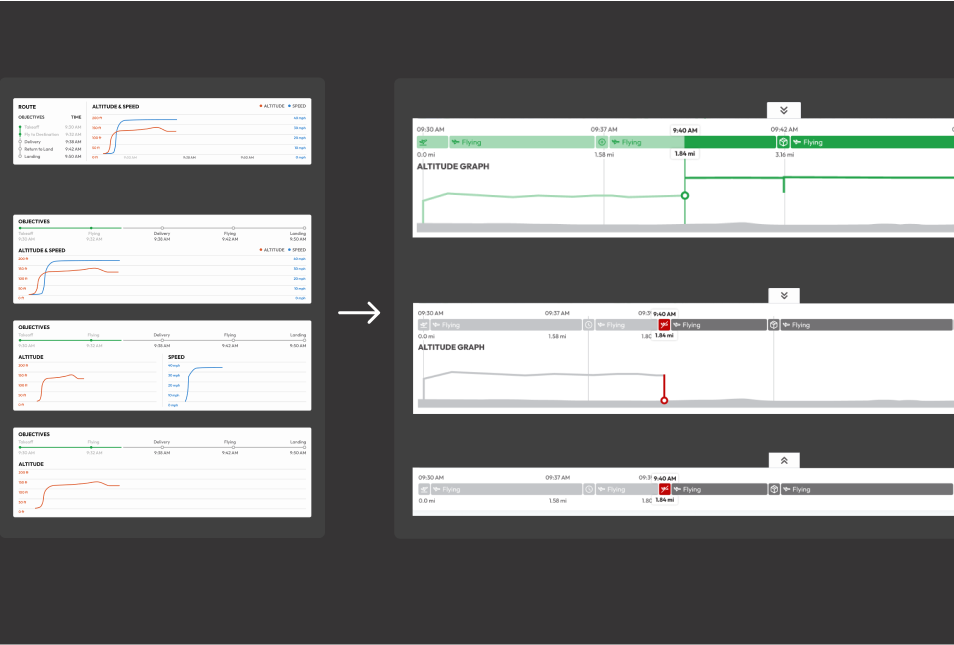
Telemetry components: refined and revised data visualizations for altitude, speed, and status.
Workflow exploration: validating how users manage and initiate the delivery process
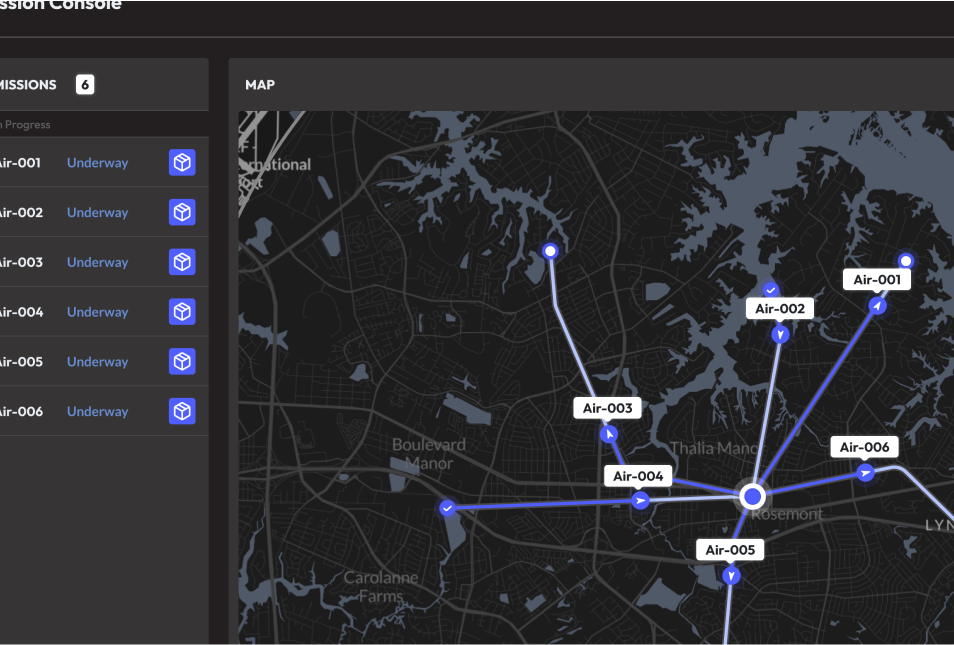
Dark mode exploration: readability and user preference in varied environments.
Scaling clarity through design systems and documentation
Refined UI patterns, streamlined compliance workflows, and aligned with engineering to ensure the platform was robust, consistent, and ready for scale.
Collaborated to create decision trees and usage guidelines so engineering could implement complex behaviors without ambiguity.
Developed components flexible enough to support evolving missions, fleet, and simulation needs.
Partnered closely with dev teams to build and integrate the system into production, ensuring handoff was efficient and reliable.
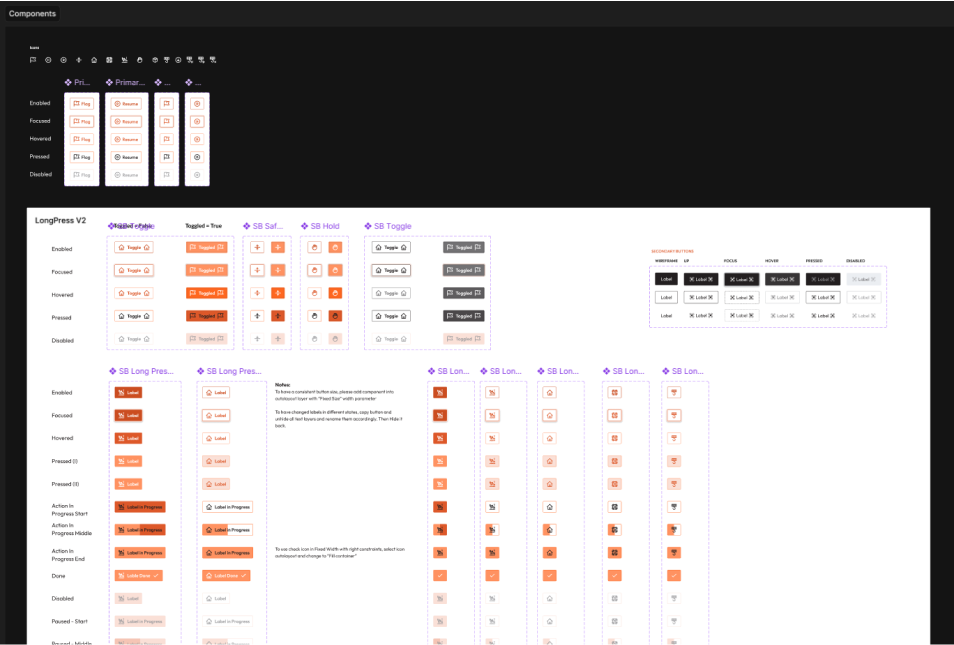
Action states library: standardized button patterns for consistent and predictable user feedback.
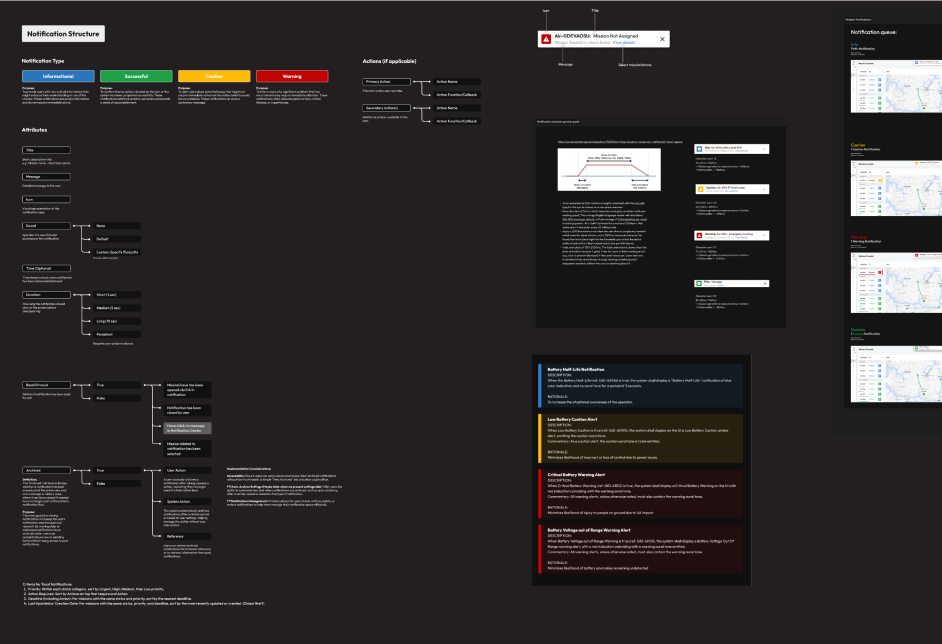
Notification framework: documented rules for alerts, warnings, and system messages to support safety-critical use cases.
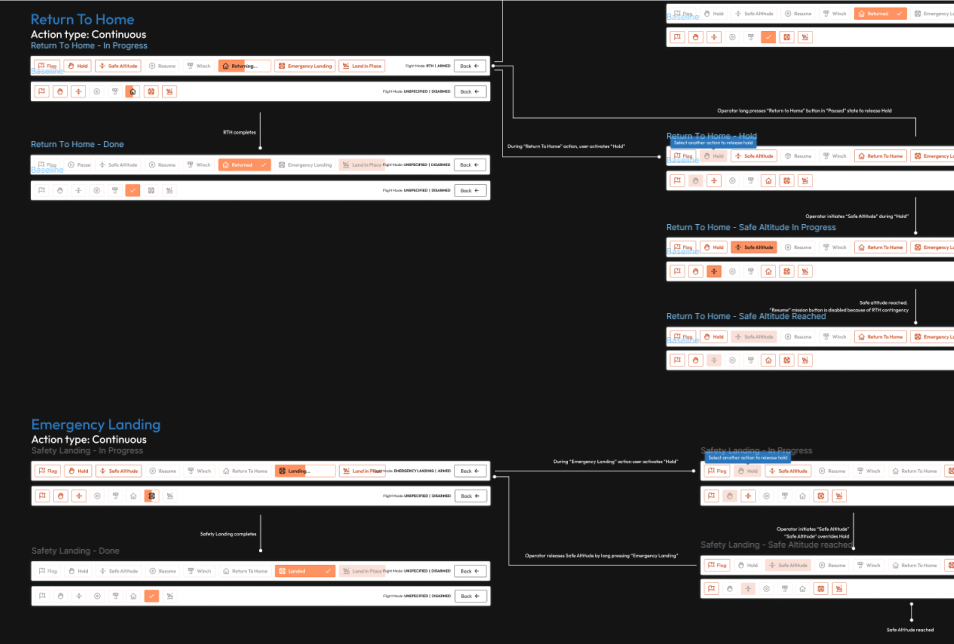
Critical workflows: documented interaction flows for mission critical and emergency actions.
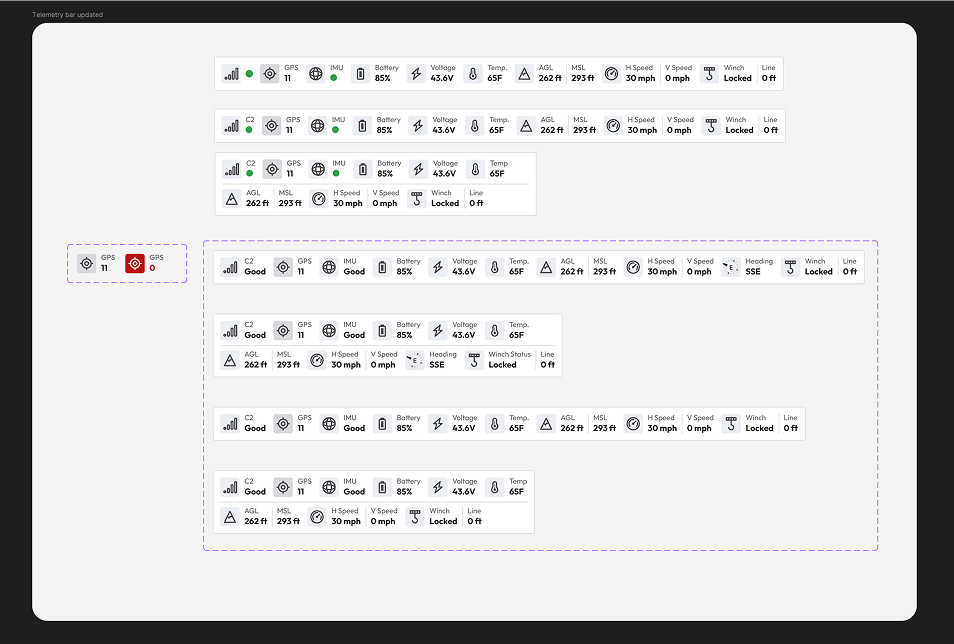
Telemetry system: reusable icon sets and modular info for quick user access.
Capability unlocked: From 1:1 to 1:many pilot missions enabling 500+ daily deliveries
A mission-critical SaaS platform, giving users a single source of truth to safely manage multi-mission drone delivery at scale.
Reduced mission setup and validation time by 60% while reinforcing compliance and safety workflows.
Consolidated multi-window tools into one cohesive ecosystem, boosting confidence and reducing errors.
Helped DroneUp enable Walmart to scale drone delivery operations reliably, safely, and cost-effectively.
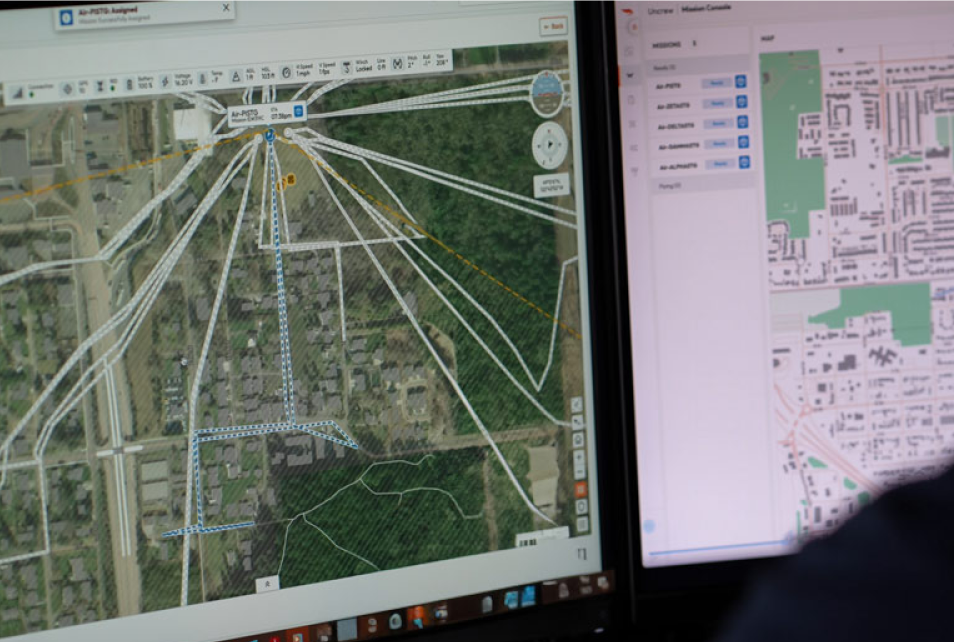
Final platform in use: users monitoring multiple live missions across sites.
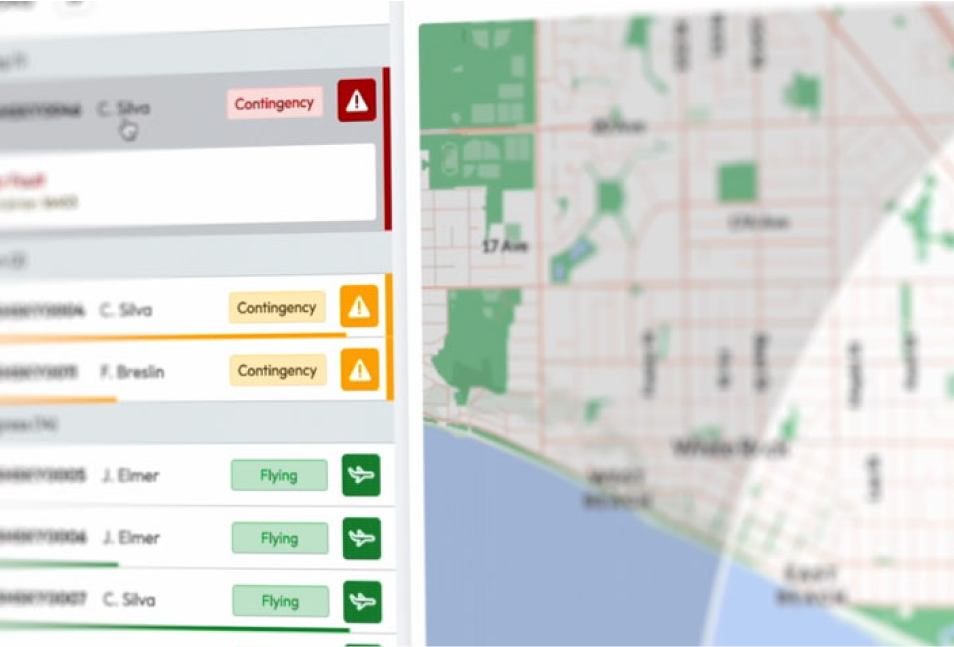
Consolidated consoles: real-time alerts and contingency handling built into user workflows.
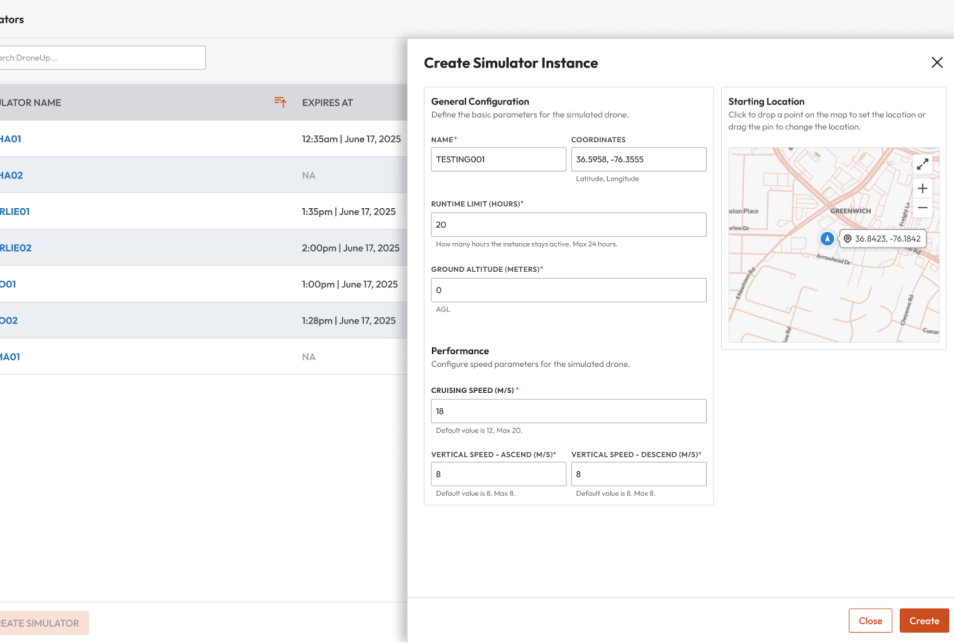
Simulator manager: enabling safe test environments for testing new missions and user training.
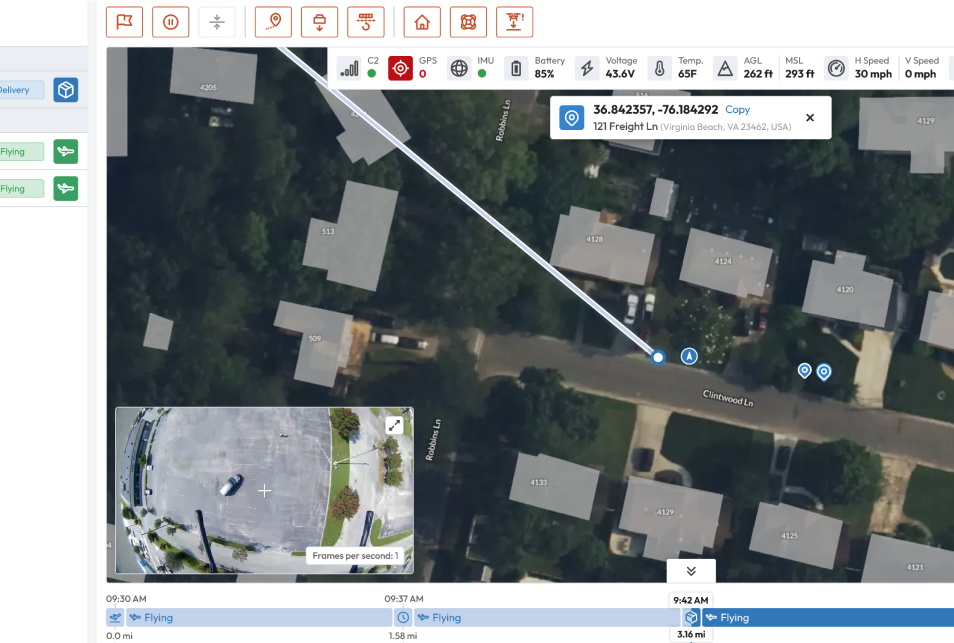
Refined delivery interface: streamlined UI for precision adjustments and package drop-off
From Lessons to Future Opportunities
Opportunities remain for AI-driven mission planning and system management, predictive safety insights, and deeper automation to expand operations.
Lessons learned
Uncrew reinforced that scalable platforms need cohesive ecosystems, not isolated features.
By integrating regulatory standards early, we ensured safety without compromising user experience.
Small design choices, color states, alerts, layouts, directly reduced cognitive load and improved safety.
Possibilities for AI-driven automation
Integrate real-time telemetry with predictive analytics to flag risks before they occur.
An AI assistant that guides operators through setup, checks compliance, and flags anomalies before launch.
Chatbot assistant integrated into the platform for quick queries ("What's the status of Vehicle 12?").
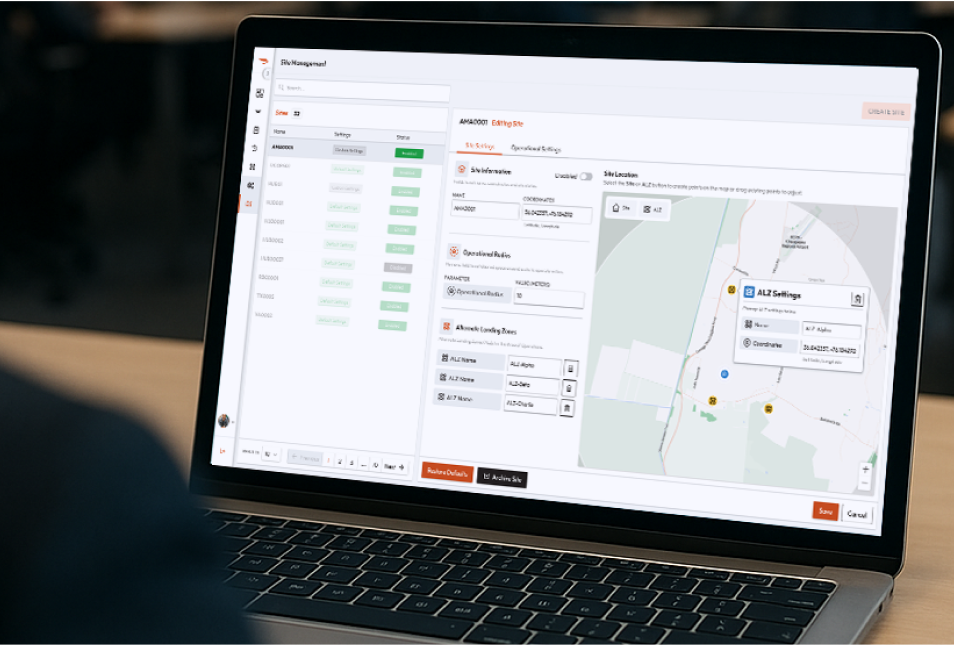
Next-gen concepts: expanding Uncrew with predictive planning and real-time insights.
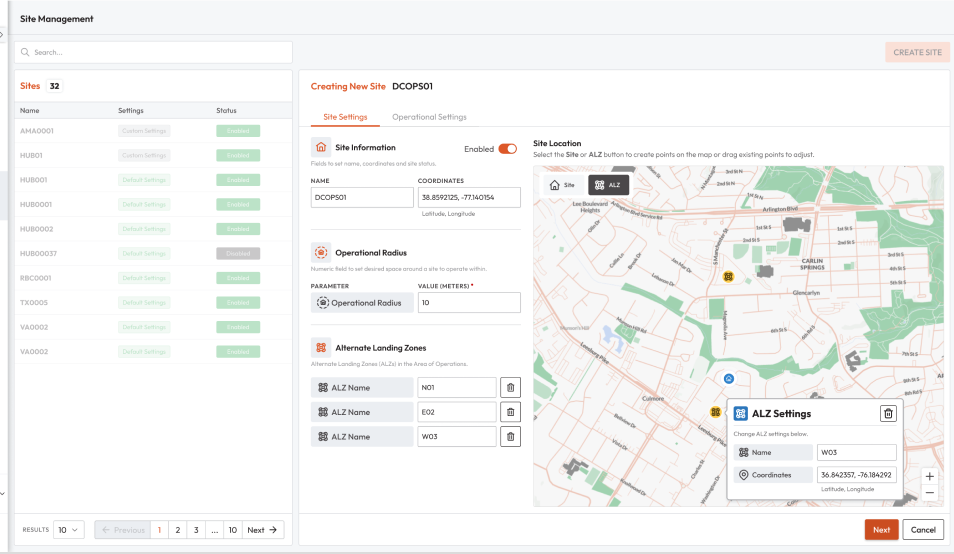
Site management evolution: opportunities to automate site configuration and compliance checks.
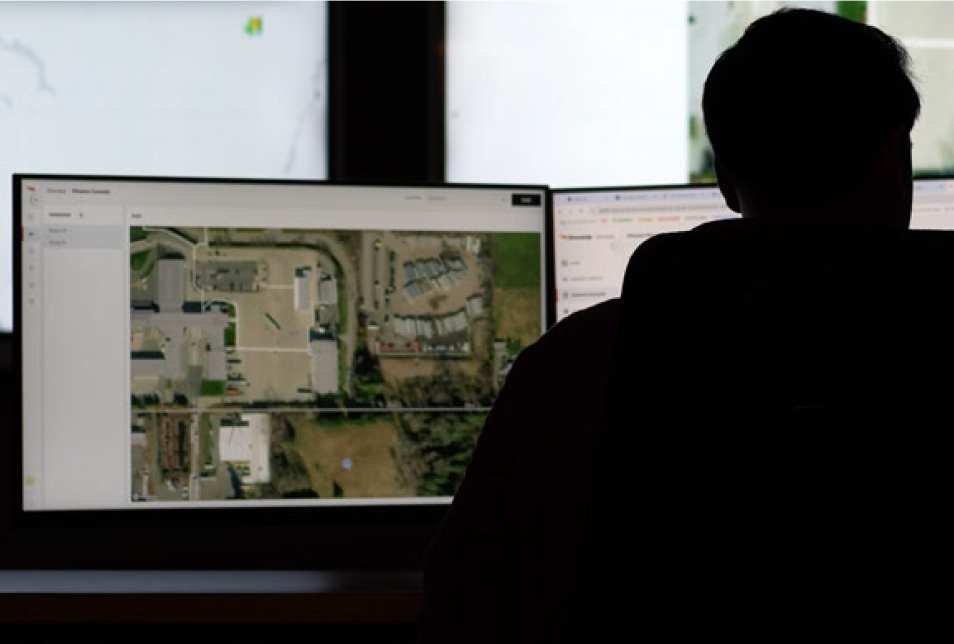
Operator of the future: AI-augmented mission control reducing cognitive load while increasing safety.
What I Learned, Where I'm Headed
Even the most complex systems can and should be designed for confidence and impact.
Uncrew showed me how to design for clarity, scale, and impact in complex, regulated environments. These lessons, combined with opportunities for AI-driven planning and automation, shape how I approach the next generation of mission-critical products.
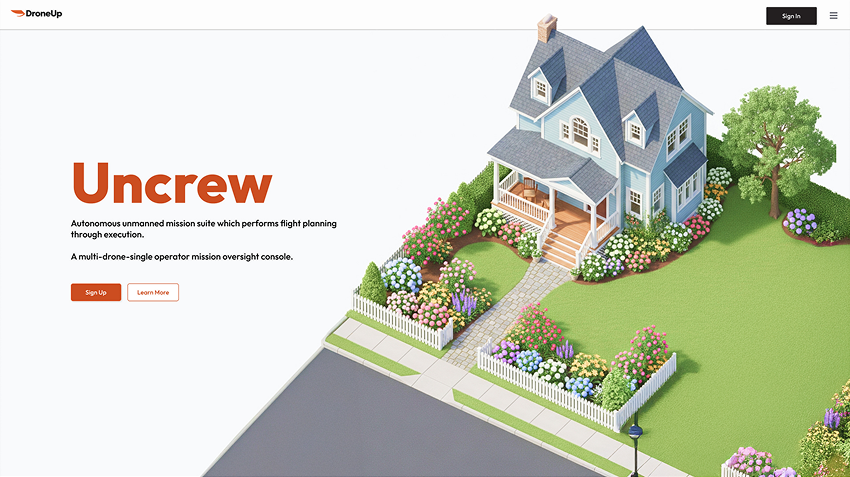
Concept landing page: envisioning Uncrew as the go-to platform for autonomous delivery solutions for various brands and businesses.
Credits / Collaborators
With a special thanks to:
Dmytro Kaliuzhni: Designer
Hunter Willoughby, Chris Sebastian, Karson Stone: Product Management
Chris Wasowicz, Sviatoslav Kuzhelev: Front-End Engineering
Contact
Email:
kerry.p.dinsmore @ gmail.com
Call:
+1 520.390.3536
Location:
Tucson, Arizona